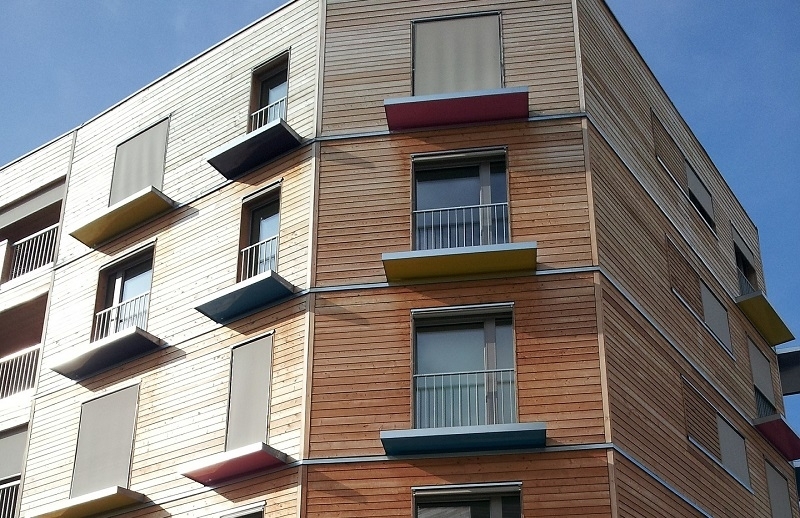How to avoid unsightly inconsistent colour tones in cladding
Published: 24/02/21 By: Mike Bekin
Whilst we may think construction mostly means concrete, steel and bricks, there are trends when it comes to materials used in the building trade. Timber is a popular pick for construction projects – and for good reason.
Timber cladding offers you a great range of colours and textures, providing plenty of opportunities to bring character to the design.
Plus, it suits a range of industries and is used in high-rise mixed-use buildings, domestic developments, school buildings, and medical facilities.
However, with timber's susceptibility to ageing, discolouration, shrinking, expanding, and rotting, which actions can you take to make the most of it? Let us give you some tips.
Durability
Most exterior wood cladding is softwood, which is "moderately'' durable, however, cheaper, less long-lasting timber – such as European redwood should only be utilized if treated. For this, we recommend our Thermodified process, which ensures it acquires a golden colour; as well as enhanced stability and durability, making timber perfect for cladding projects.
Also, locations where timber cladding will need regular examination, upkeep, retreatment and potentially repair, need to have good access for these works to be carried out.
Shrinkage
Among the properties of timber is that it can shrink and swell as it gains and releases its natural moisture.
Detailing should take account of this movement right into making use of overlapping boards, extra-large holes around fixings, as well as open-jointed designs.
Timber is a natural material that adapts to its environment: it swells and shrinks with moisture and fades to silver-grey by UV light and rain when left unprotected. WPC, on the other hand, doesn't. If you're looking for the next best thing, look no further than WPC (wood + plastic composite) cladding.
Fixings
One of the most noticeable issues with any type of cladding is discolouring from the fixings. If the wood cladding is installed and secured correctly (as per the suppliers' instructions), as well as sufficiently maintained, it will certainly last a long time, but if any effort is neglected in specifying the right fixing screws, you can end up with unpleasant staining as a result of the iron oxides reacting with the timber tannins. As such, always go for stainless steel if you can afford it.
Poor-quality fixings can also become a big issue over time as they will not withstand the elements, making it an ideal fit for the UK weather.
Staining and weathering
The problem is that, if left unfinished, any timber, including all typical softwoods such as Siberian Larch, Cedar and Pine will certainly bleach out to a silver grey colour, which could not be uniform, and may look inconsistent. This depends on the direct exposure to sun, wind, and rain as well as positioning of the building the cladding is being applied to.
Additionally, where there are high levels of pollution, predominantly from traffic, the wood surface might absorb the dust and fumes, thus ending up being much darker.
If you are considering cladding for your next construction project, then contact us before you make any decisions.
We can advise on what will work best for your structure, offer solutions for any areas that may cause a problem and point you in the right direction.
